Pass Your Cisco CCNA Certification Easy!
Cisco CCNA Certification Exams Questions & Answers, Accurate & Verified By IT Experts
Instant Download, Free Fast Updates, 99.6% Pass Rate.

$69.99
Download Free CCNA Practice Test Questions VCE Files
| Exam | Title | Files |
|---|---|---|
Exam 200-301 |
Title Cisco Certified Network Associate (CCNA) |
Files 2 |
Cisco CCNA Certification Exam Dumps & Practice Test Questions
Prepare with top-notch Cisco CCNA certification practice test questions and answers, vce exam dumps, study guide, video training course from ExamCollection. All Cisco CCNA certification exam dumps & practice test questions and answers are uploaded by users who have passed the exam themselves and formatted them into vce file format.
Introduction to Cisco CCNA Certification
The Cisco Certified Network Associate (CCNA) certification is a globally recognized credential that validates a professional’s understanding of networking fundamentals. It is designed for individuals who want to establish a career in IT networking, providing them with the knowledge and skills to manage, operate, and troubleshoot network systems. CCNA certification covers a wide range of topics, from basic network concepts to advanced routing and switching, security fundamentals, and automation.
Networking is the backbone of modern technology. With businesses relying heavily on digital infrastructure, professionals who understand how networks function are highly valued. CCNA certification equips individuals with the ability to design, configure, and manage networks efficiently, making them indispensable to organizations across various industries.
Core Networking Concepts
Understanding core networking concepts is essential before delving into more complex topics. Networking involves connecting computers, servers, and devices so that they can communicate and share resources. Key concepts include IP addressing, subnetting, network protocols, and the OSI model.
IP addressing provides unique identifiers for devices on a network, ensuring proper communication. Subnetting divides larger networks into smaller, manageable segments, improving performance and security. Network protocols define the rules for data transmission, with common protocols including TCP, UDP, HTTP, and FTP. The OSI model is a conceptual framework that describes the layers of network communication, helping professionals troubleshoot issues systematically.
Routing and Switching Fundamentals
Routing and switching form the foundation of network operations. Switches connect devices within a local area network (LAN), while routers connect multiple networks, such as LANs to wide area networks (WANs). Understanding how data flows through these devices is crucial for efficient network management.
Switching involves creating a network that allows devices to communicate at high speed. Managed switches enable administrators to configure settings, control traffic, and enhance security. Routing involves determining the best path for data to travel across networks. Dynamic routing protocols such as OSPF, EIGRP, and RIP allow routers to adapt to network changes automatically, while static routing requires manual configuration.
Network Security Essentials
With the increasing number of cyber threats, network security has become a critical aspect of networking. CCNA certification introduces professionals to essential security concepts, helping them protect network infrastructure from unauthorized access and attacks. Key security topics include firewalls, access control lists (ACLs), VPNs, and secure management protocols.
Firewalls monitor and filter incoming and outgoing network traffic based on predefined security rules. ACLs control which devices or users can access specific resources. Virtual Private Networks (VPNs) enable secure communication over public networks. Additionally, protocols such as SSH, HTTPS, and SNMPv3 provide secure management and monitoring of network devices.
Wireless Networking Concepts
Wireless networking is a vital component of modern IT environments. CCNA covers wireless technologies, including Wi-Fi standards, wireless LAN configuration, and security considerations. Wireless networks offer flexibility and mobility, allowing users to connect without physical cables, but they also introduce unique security challenges.
Understanding frequency bands, SSIDs, encryption methods, and wireless authentication is critical for deploying secure and efficient wireless networks. Network professionals must also manage interference, signal strength, and coverage to ensure reliable connectivity for users.
Network Troubleshooting and Maintenance
Troubleshooting is a fundamental skill for any network professional. CCNA certification emphasizes the ability to identify, diagnose, and resolve network issues efficiently. Common troubleshooting steps include verifying device configurations, checking physical connections, analyzing routing tables, and monitoring network performance.
Preventive maintenance is equally important. Regularly updating firmware, monitoring network traffic, and performing backups help ensure network stability and reliability. Professionals must also be familiar with diagnostic tools such as ping, traceroute, and network analyzers to detect and resolve issues proactively.
Automation and Network Management
Automation is transforming the networking landscape. CCNA introduces the basics of network automation, allowing professionals to streamline repetitive tasks and improve operational efficiency. Tools and protocols such as Python scripting, REST APIs, and configuration management platforms enable automated network provisioning, monitoring, and management.
Understanding network management involves not only configuring devices but also monitoring performance, analyzing logs, and implementing policies that align with organizational goals. Effective network management reduces downtime, enhances security, and ensures consistent service delivery.
Career Opportunities with CCNA
Earning CCNA certification opens a wide range of career opportunities in networking. Professionals can pursue roles such as network administrator, network engineer, systems analyst, and IT support specialist. Organizations value CCNA-certified individuals for their ability to design, implement, and maintain network infrastructure effectively.
In addition to technical skills, CCNA certification demonstrates problem-solving abilities, attention to detail, and a commitment to continuous learning. These attributes are highly sought after in IT environments, providing a strong foundation for career growth and specialization in advanced networking areas.
Preparing for the CCNA Exam
Preparation for the CCNA exam requires a structured approach. Candidates should start with a solid understanding of networking fundamentals, followed by hands-on practice with routers, switches, and simulation tools. Study materials, practice exams, and lab exercises help reinforce theoretical knowledge and develop practical skills.
Time management is crucial when preparing for the exam. Creating a study schedule, focusing on weak areas, and consistently reviewing key concepts ensure comprehensive readiness. Additionally, staying updated with Cisco’s exam objectives and industry trends helps candidates align their preparation with current requirements.
Importance of Continuous Learning
The field of networking is constantly evolving, with new technologies and protocols emerging regularly. CCNA certification is an excellent starting point, but continuous learning is essential for long-term success. Professionals should explore advanced certifications, attend workshops, participate in networking communities, and stay informed about industry developments.
Continuous learning not only enhances technical expertise but also increases employability and career advancement opportunities. Networking professionals who embrace lifelong learning remain adaptable and prepared to tackle complex challenges in dynamic IT environments.
The Cisco CCNA certification is more than just a credential; it is a gateway to a successful career in networking. By mastering core concepts, understanding routing and switching, implementing security measures, managing wireless networks, and embracing automation, professionals can build a strong foundation for their IT journey. CCNA certification validates knowledge, enhances career prospects, and empowers individuals to contribute effectively to modern networking environments. With dedication, practice, and continuous learning, aspiring network professionals can leverage CCNA certification to achieve long-term success and growth in the ever-evolving world of information technology.
Routing Protocols and Their Importance
Routing protocols are critical for the efficient movement of data across networks. They determine the best path for data packets from a source device to a destination device, ensuring optimal performance and reliability. In the context of CCNA, understanding routing protocols is essential for network design, troubleshooting, and maintenance.
There are two main categories of routing protocols: distance-vector and link-state. Distance-vector protocols, such as RIP (Routing Information Protocol), rely on hop count to determine the best path. They are simple to configure but may converge slowly in large networks. Link-state protocols, like OSPF (Open Shortest Path First), maintain a complete map of the network topology and provide faster convergence, making them suitable for enterprise networks.
EIGRP (Enhanced Interior Gateway Routing Protocol) is another widely used protocol that combines features of both distance-vector and link-state protocols. It supports fast convergence, scalable routing, and efficient use of bandwidth. Understanding these protocols allows network professionals to configure routers effectively and ensure seamless communication between network segments.
Switching Technologies and VLANs
Switching technologies form the foundation of LAN connectivity. Switches operate at the data link layer and facilitate communication between devices within a network. Modern networks rely on managed switches, which provide advanced features such as VLANs (Virtual Local Area Networks), port security, and Quality of Service (QoS).
VLANs segment a physical network into multiple logical networks, improving security, reducing broadcast traffic, and enhancing overall performance. By assigning devices to different VLANs based on function, department, or location, administrators can enforce policies and isolate sensitive data. Trunking protocols like 802.1Q allow VLAN traffic to traverse multiple switches while maintaining separation between different network segments.
Understanding switching concepts also includes knowledge of spanning tree protocol (STP). STP prevents loops in redundant switch topologies, ensuring network stability. Configuring STP properly is crucial for avoiding broadcast storms and maintaining uninterrupted communication in enterprise networks.
Subnetting and IP Addressing
Subnetting is a fundamental skill for network professionals. It divides a large network into smaller, manageable sub-networks, optimizing resource usage and enhancing security. CCNA certification emphasizes both IPv4 and IPv6 addressing schemes, as well as the process of subnet calculation.
IPv4 addresses consist of a 32-bit number divided into network and host portions. Subnet masks define which part of the address represents the network and which represents individual hosts. Subnetting allows administrators to control network size, minimize wasted IP addresses, and organize network segments logically.
IPv6, the next-generation addressing standard, addresses the limitations of IPv4 by providing a larger address space and simplified routing. Understanding IPv6 addressing, including global unicast, link-local, and multicast addresses, is essential for modern network environments. Subnetting in IPv6 also improves network efficiency and facilitates scalable design.
Advanced Network Design
Designing a network requires careful planning to balance performance, reliability, and security. CCNA prepares professionals to create efficient network architectures using hierarchical models, redundant paths, and load balancing techniques.
The hierarchical network model divides the network into core, distribution, and access layers. The core layer provides high-speed backbone connectivity, the distribution layer handles policy enforcement and routing between segments, and the access layer connects end devices. This layered approach simplifies troubleshooting, enhances scalability, and allows better management of network resources.
Redundancy is a critical aspect of network design. Using multiple paths and redundant devices ensures continuity in case of hardware failure or link disruption. Protocols such as HSRP (Hot Standby Router Protocol) and VRRP (Virtual Router Redundancy Protocol) provide automatic failover, minimizing downtime and maintaining service availability.
Network Address Translation and NAT Types
Network Address Translation (NAT) is a technology that allows private IP addresses to communicate with public networks. NAT improves security by hiding internal network structures and conserving public IP addresses. CCNA covers various NAT types, including static, dynamic, and PAT (Port Address Translation).
Static NAT maps a single private IP to a specific public IP, commonly used for servers that must be accessible from external networks. Dynamic NAT assigns public IP addresses from a pool, ideal for general user traffic. PAT allows multiple private IPs to share a single public IP by differentiating traffic using port numbers, making it a practical solution for enterprise environments.
Understanding NAT and its types enables professionals to design secure and scalable networks that can efficiently handle internal and external traffic. NAT also plays a role in VPN connectivity and firewall configurations, further enhancing network security.
WAN Technologies and Connectivity
Wide Area Networks (WANs) connect geographically dispersed networks, allowing organizations to communicate and share resources across locations. CCNA introduces essential WAN technologies, including MPLS, Frame Relay, DSL, and VPNs.
MPLS (Multiprotocol Label Switching) improves traffic management and routing efficiency by assigning labels to data packets. Frame Relay, while older, is still used in some enterprise environments for reliable data transport. DSL and broadband technologies provide high-speed connectivity for smaller offices. VPNs create secure tunnels over public networks, allowing remote users to access corporate resources safely.
Understanding WAN technologies is crucial for designing resilient networks, optimizing bandwidth, and ensuring secure connectivity between branch offices and data centers. Professionals must also be familiar with WAN troubleshooting techniques, such as latency measurement, link monitoring, and performance analysis.
Quality of Service and Traffic Management
Quality of Service (QoS) is essential for ensuring network performance, especially for latency-sensitive applications like VoIP and video conferencing. CCNA covers QoS concepts, including traffic prioritization, congestion management, and bandwidth allocation.
Traffic can be classified based on type, source, or destination, and QoS policies determine which traffic receives priority. Techniques such as queuing, policing, and shaping help manage congestion and maintain consistent performance. Implementing QoS ensures that critical applications function smoothly, even during periods of high network utilization.
Effective traffic management enhances user experience, reduces packet loss, and minimizes latency, which is particularly important for modern enterprise applications that rely on real-time communication.
Network Security Measures
As networks grow in complexity, security becomes increasingly critical. CCNA emphasizes foundational security measures, such as firewall deployment, ACLs, VPNs, and secure device management.
Firewalls filter traffic based on policies, preventing unauthorized access and protecting sensitive data. ACLs provide granular control over network traffic, allowing administrators to permit or deny access to specific devices or applications. VPNs enable secure communication for remote users and branch offices, using encryption to protect data in transit.
Secure device management includes configuring strong passwords, enabling SSH for remote access, and applying firmware updates regularly. These measures prevent unauthorized access, minimize vulnerabilities, and maintain network integrity.
Monitoring and Troubleshooting Networks
Proactive monitoring and troubleshooting are essential for maintaining network health. CCNA equips professionals with the skills to analyze network performance, identify issues, and implement corrective actions.
Network monitoring involves tracking bandwidth usage, detecting anomalies, and reviewing logs. Tools such as SNMP, syslog, and network analyzers provide valuable insights into device performance and traffic patterns.
Troubleshooting follows a systematic approach: identify the problem, gather information, develop a hypothesis, test solutions, and implement fixes. Common issues include misconfigured devices, faulty cables, IP conflicts, and routing errors. A structured troubleshooting methodology ensures quick resolution and minimizes service disruption.
Emerging Technologies and the Future of Networking
Networking is evolving rapidly, with new technologies transforming the way networks are designed and managed. CCNA introduces concepts such as software-defined networking (SDN), network automation, and cloud integration.
SDN separates the control plane from the data plane, enabling centralized management and more agile network operations. Network automation reduces manual tasks through scripting and APIs, improving efficiency and reducing errors. Cloud integration allows organizations to leverage scalable infrastructure while maintaining secure connectivity.
Understanding these emerging technologies prepares professionals for the future of networking, enabling them to adapt to changing industry requirements and advance their careers.
Career Growth and Specialization
Achieving CCNA certification lays the foundation for career advancement. Professionals can pursue specialized roles in routing and switching, network security, wireless networking, or network automation. Each specialization offers opportunities for higher salaries, challenging projects, and increased responsibility.
Continuing education, certifications, and hands-on experience are essential for long-term success. Certifications such as CCNP (Cisco Certified Network Professional) and CCIE (Cisco Certified Internetwork Expert) build on CCNA knowledge, enabling professionals to tackle complex enterprise networks and assume leadership positions.
Routing, switching, subnetting, and WAN technologies form the backbone of network infrastructure. Understanding these concepts is essential for efficient network design, implementation, and management. Quality of Service, security measures, and emerging technologies further enhance network performance and resilience.
CCNA certification equips professionals with these skills, preparing them for a dynamic and rewarding career in networking. By mastering core concepts, gaining practical experience, and staying updated with technological advancements, individuals can achieve long-term success and become valuable contributors to the IT industry.
Network Security Fundamentals
Network security is one of the most critical aspects of modern IT infrastructure. As organizations increasingly rely on digital systems, securing networks against unauthorized access, malware, and cyberattacks becomes essential. CCNA introduces foundational security concepts, preparing professionals to implement effective security strategies.
Firewalls are primary tools for network protection. They monitor incoming and outgoing traffic and enforce security policies to prevent unauthorized access. Network administrators configure firewalls to block malicious traffic, allow legitimate communication, and segment networks for added security. Understanding firewall types, such as stateful and stateless, is crucial for proper deployment.
Access Control Lists (ACLs) are another vital security measure. ACLs allow administrators to define rules that permit or deny traffic based on IP addresses, protocols, or port numbers. Properly configured ACLs enhance security by controlling who can access network resources. Combining ACLs with firewalls provides layered protection against threats.
Virtual Private Networks (VPNs) enable secure communication over public networks. By encrypting data, VPNs ensure confidentiality and integrity while allowing remote employees or branch offices to access corporate resources safely. CCNA covers VPN technologies such as site-to-site and remote-access VPNs, highlighting their role in secure network connectivity.
Securing Network Devices
Securing network devices is essential to maintain overall network integrity. CCNA emphasizes configuring strong passwords, enabling encryption, and using secure protocols for management. Devices such as routers and switches should be configured with unique administrative passwords, limiting access to authorized personnel only.
Secure management protocols, including SSH for remote access and HTTPS for web-based device management, prevent data interception and unauthorized login attempts. Regular firmware updates and patching help protect devices against known vulnerabilities. Proper logging and monitoring of device activity also support proactive security management.
Wireless Networking Essentials
Wireless networking has become a critical component of enterprise networks. CCNA covers Wi-Fi standards, wireless LAN design, and security considerations to ensure reliable and secure connectivity. Wireless networks provide flexibility and mobility, allowing devices to connect without physical cables, but they introduce unique challenges that must be addressed.
Understanding frequency bands, signal interference, and access point placement is crucial for optimal wireless performance. Configuring secure SSIDs, using strong encryption methods like WPA3, and implementing authentication protocols help protect wireless networks from unauthorized access. Additionally, wireless monitoring tools allow administrators to detect rogue access points and troubleshoot connectivity issues efficiently.
Network Automation and Scripting
Automation is revolutionizing networking by reducing manual configuration tasks and improving operational efficiency. CCNA introduces basic concepts of network automation, allowing professionals to use scripts and APIs to manage devices and perform repetitive tasks.
Python scripting is a popular tool for automation. Simple scripts can configure multiple devices simultaneously, check network health, and perform backups. REST APIs provide programmatic access to network devices, enabling integration with monitoring tools, orchestration platforms, and cloud services.
Automation reduces human error, saves time, and allows network administrators to focus on strategic tasks. As networks grow in complexity, automation becomes essential for maintaining consistency, compliance, and rapid deployment of services.
Network Monitoring and Troubleshooting Tools
Monitoring and troubleshooting are vital for maintaining network health. CCNA equips professionals with the skills to analyze performance, identify issues, and implement corrective measures effectively.
Network monitoring tools provide visibility into device status, bandwidth usage, and traffic patterns. Protocols like SNMP allow administrators to collect and analyze data from network devices, helping detect anomalies before they impact operations. Syslog servers capture event logs, providing insights into device activity and potential security threats.
Troubleshooting requires a structured approach. Identifying the problem, gathering information, developing a hypothesis, testing solutions, and implementing fixes ensures efficient resolution. Tools such as ping, traceroute, and packet analyzers help diagnose connectivity issues, routing errors, and performance bottlenecks. Proper troubleshooting minimizes downtime, improves reliability, and enhances user experience.
VLANs and Inter-VLAN Routing
Virtual Local Area Networks (VLANs) segment a network logically, improving performance and security. VLANs reduce broadcast traffic, isolate sensitive data, and enable administrators to enforce policies based on function or department.
Inter-VLAN routing allows devices in different VLANs to communicate. Routers or Layer 3 switches facilitate this process, ensuring data can flow across VLAN boundaries. Understanding VLAN configuration, trunking protocols like 802.1Q, and routing methods is essential for designing efficient network architectures.
VLANs also play a role in network security. By isolating critical systems or sensitive data, administrators can reduce the attack surface and implement granular access control. Combining VLANs with ACLs and firewall policies enhances overall network protection.
Redundancy and High Availability
High availability is critical in modern networks where downtime can have significant business impacts. CCNA covers redundancy techniques and protocols that ensure continuous network operation even in case of failures.
Redundant links, devices, and paths improve fault tolerance. Protocols like HSRP (Hot Standby Router Protocol) and VRRP (Virtual Router Redundancy Protocol) provide automatic failover, ensuring uninterrupted connectivity. Spanning Tree Protocol (STP) prevents loops in redundant switch topologies, maintaining stability.
Network designers must balance redundancy with cost and complexity. Effective implementation ensures reliability without unnecessary resource expenditure. High availability strategies are essential for enterprise networks, data centers, and mission-critical applications.
Quality of Service and Traffic Prioritization
Quality of Service (QoS) ensures optimal network performance by prioritizing critical traffic. Latency-sensitive applications such as VoIP, video conferencing, and real-time collaboration benefit from QoS policies that manage congestion and allocate bandwidth effectively.
Traffic classification identifies packets based on type, source, or destination, allowing administrators to apply priority levels. Techniques such as queuing, traffic shaping, and policing help manage network load and maintain consistent performance.
Implementing QoS improves user experience, reduces packet loss, and ensures that essential services operate smoothly. In complex networks, proper QoS configuration is critical for maintaining operational efficiency and service reliability.
Hands-On Labs and Practice
Practical experience is crucial for CCNA success. Hands-on labs allow learners to apply theoretical knowledge to real-world scenarios, enhancing understanding and skill development. Configuring routers, switches, VLANs, ACLs, and security policies in a lab environment prepares candidates for both exams and professional tasks.
Simulation tools such as Cisco Packet Tracer and GNS3 provide a safe and flexible environment for experimentation. Practicing troubleshooting scenarios, configuring routing protocols, and implementing security measures helps reinforce concepts and build confidence.
Consistent lab practice complements study materials and theoretical learning. It develops problem-solving abilities, improves efficiency, and prepares candidates to tackle complex networking challenges in professional environments.
Emerging Trends in Networking
Networking continues to evolve rapidly, with emerging technologies shaping the future of IT infrastructure. Software-defined networking (SDN), cloud integration, network virtualization, and automation are transforming traditional networks into agile, efficient, and scalable environments.
SDN separates the control plane from the data plane, allowing centralized management and rapid network provisioning. Network virtualization enables multiple virtual networks to operate on a single physical infrastructure, optimizing resource usage. Cloud integration connects on-premises networks with cloud services, providing scalability, flexibility, and resilience.
Understanding these trends prepares CCNA-certified professionals for modern networking environments, ensuring they remain relevant and adaptable as the industry evolves. Continuous learning and staying informed about technological advancements are essential for long-term career growth.
Career Pathways and Specialization Opportunities
CCNA certification opens doors to numerous career opportunities in networking. Professionals can pursue roles such as network administrator, network engineer, systems analyst, IT support specialist, or wireless network engineer. Each role requires a strong foundation in networking principles, hands-on skills, and problem-solving abilities.
Beyond CCNA, professionals can specialize in advanced areas such as network security, routing and switching, cloud networking, or network automation. Pursuing higher-level certifications like CCNP and CCIE builds on foundational knowledge and provides access to more complex projects, leadership roles, and higher salaries.
Continuous professional development, hands-on experience, and staying updated with industry trends are key to long-term success. Networking professionals who embrace lifelong learning remain competitive and valuable in an ever-changing IT landscape.
Network security, wireless networking, automation, monitoring, and hands-on practice are critical components of a successful CCNA journey. By mastering these areas, professionals gain the skills needed to design, implement, and maintain reliable, secure, and efficient networks.
CCNA certification validates knowledge, builds confidence, and opens doors to diverse career opportunities. Understanding emerging trends and continuously updating skills ensures long-term success in networking. With dedication, practical experience, and a commitment to learning, aspiring professionals can leverage CCNA certification to thrive in the dynamic world of IT networking.
Advanced Network Troubleshooting
Effective troubleshooting is essential for maintaining a healthy network environment. CCNA equips professionals with a structured approach to diagnosing and resolving network issues efficiently. Troubleshooting involves identifying the problem, gathering relevant data, hypothesizing potential causes, testing solutions, and implementing fixes.
Common network problems include IP conflicts, misconfigured routing protocols, faulty hardware, and connectivity failures. Tools such as ping, traceroute, and telnet provide insights into device reachability and path issues. Packet analyzers allow detailed inspection of network traffic, helping detect anomalies, latency, and packet loss.
Structured troubleshooting ensures minimal downtime and maintains network reliability. Combining theoretical knowledge with hands-on practice enhances a professional’s ability to quickly identify and resolve complex network issues.
Deploying IPv6 Networks
IPv6 is the next-generation Internet Protocol designed to address IPv4 limitations, including address exhaustion. CCNA emphasizes the importance of understanding IPv6 addressing, configuration, and deployment strategies.
IPv6 addresses are 128 bits long, providing a virtually unlimited address space. They include global unicast, link-local, multicast, and anycast addresses. Network professionals must understand the differences, allocation strategies, and subnetting techniques to design efficient IPv6 networks.
Transitioning from IPv4 to IPv6 requires planning. Dual-stack implementation, tunneling mechanisms, and translation techniques enable seamless communication between IPv4 and IPv6 devices. Proper deployment ensures network scalability, future-proofing, and compliance with modern Internet standards.
WAN Design and Implementation
Wide Area Networks (WANs) connect geographically dispersed sites, enabling secure communication and resource sharing. CCNA covers WAN technologies, design principles, and implementation strategies to ensure reliable connectivity.
Designing a WAN involves selecting appropriate transport technologies, configuring routing protocols, and implementing redundancy for fault tolerance. MPLS, VPNs, and leased lines are commonly used solutions, each with advantages and considerations regarding cost, performance, and security.
WAN performance can be optimized through Quality of Service (QoS), traffic shaping, and proper link monitoring. These measures ensure efficient utilization of bandwidth, prioritize critical applications, and minimize latency and packet loss. Understanding WAN design is crucial for enterprises with multiple locations and remote operations.
Security Strategies for Enterprise Networks
Network security is a continuous concern for organizations. CCNA introduces comprehensive security strategies that combine technical measures, policies, and best practices to safeguard network infrastructure.
Firewalls and ACLs form the first line of defense, controlling access to sensitive resources. Network segmentation using VLANs and private subnets reduces exposure to potential threats. VPNs enable secure remote connectivity, while intrusion detection and prevention systems monitor traffic for suspicious activity.
Device hardening is another essential strategy. This includes disabling unused services, implementing strong authentication, configuring secure management protocols, and regularly applying firmware updates. Proper monitoring and auditing ensure that security measures remain effective over time.
Implementing VLANs and Inter-VLAN Routing
VLANs are critical for logical network segmentation, reducing broadcast traffic, improving security, and organizing resources efficiently. CCNA emphasizes configuring VLANs, trunking, and inter-VLAN routing to facilitate communication between different network segments.
Trunking protocols such as 802.1Q allow multiple VLANs to traverse a single link between switches, maintaining isolation while enabling connectivity. Inter-VLAN routing on routers or Layer 3 switches ensures that devices on separate VLANs can communicate securely and efficiently.
Proper VLAN design improves network performance, simplifies troubleshooting, and enhances overall security. Understanding VLAN concepts is essential for enterprise networks with multiple departments or service requirements.
Redundancy and High Availability Protocols
Ensuring high availability is vital for modern networks, where downtime can impact business operations significantly. CCNA introduces redundancy and failover mechanisms to maintain uninterrupted network service.
Protocols such as HSRP (Hot Standby Router Protocol) and VRRP (Virtual Router Redundancy Protocol) allow routers to provide backup paths in case of failure. Spanning Tree Protocol (STP) prevents switching loops in redundant topologies, maintaining network stability.
Implementing redundancy requires balancing cost, complexity, and operational benefits. A well-designed high-availability network reduces downtime, ensures continuity, and improves reliability for critical applications.
Network Performance Optimization
Optimizing network performance involves monitoring traffic, managing congestion, and ensuring efficient utilization of resources. CCNA covers techniques for performance analysis and improvement, including traffic prioritization, load balancing, and QoS implementation.
Monitoring tools collect data on bandwidth usage, latency, and packet loss, helping administrators identify bottlenecks. Load balancing distributes traffic across multiple links or devices, improving efficiency and preventing overutilization. QoS policies prioritize latency-sensitive applications, such as VoIP and video conferencing, ensuring consistent performance even during peak usage.
Effective network performance optimization enhances user experience, increases productivity, and reduces operational risks associated with slow or unreliable networks.
Wireless Network Security and Management
Wireless networks require specialized security measures to protect data and ensure reliable connectivity. CCNA introduces concepts for securing Wi-Fi networks, managing access points, and optimizing performance.
Strong encryption methods like WPA3 protect wireless traffic from eavesdropping, while secure authentication protocols ensure only authorized users can connect. Network administrators must also monitor wireless environments for rogue access points, interference, and coverage gaps.
Proper management includes strategic placement of access points, signal tuning, and periodic security audits. A well-managed wireless network enhances mobility, reliability, and security for users and organizational resources.
Network Automation and Scripting for Efficiency
Network automation is transforming how networks are managed, reducing manual configuration and operational errors. CCNA introduces basic automation concepts, empowering professionals to streamline repetitive tasks and improve efficiency.
Scripting languages such as Python allow automation of device configurations, monitoring tasks, and troubleshooting procedures. APIs provide programmatic access to network devices, enabling integration with orchestration tools and cloud platforms.
Automation not only saves time but also ensures consistency and compliance with organizational policies. Network professionals who embrace automation are better equipped to handle complex, scalable networks while reducing operational risk.
Exam Preparation Strategies
Success in CCNA exams requires a combination of theoretical knowledge, practical skills, and effective study strategies. CCNA candidates should start by understanding the exam objectives and mapping their study plan accordingly.
Hands-on practice with routers, switches, VLANs, ACLs, and routing protocols is essential. Simulation tools such as Packet Tracer and GNS3 allow candidates to experiment in a controlled environment, reinforcing learning and building confidence.
Regular practice exams help identify knowledge gaps, improve time management, and familiarize candidates with exam-style questions. Consistent review, focused study sessions, and understanding core concepts are key factors in achieving certification success.
Career Advancement and Professional Growth
Achieving CCNA certification opens pathways to advanced roles and specialized areas in networking. Professionals can pursue positions such as network engineer, network security analyst, systems administrator, or wireless network specialist.
Continuous learning and professional development are crucial for long-term career growth. Higher-level certifications such as CCNP and CCIE build on CCNA knowledge, offering access to more complex networks, leadership roles, and higher earning potential.
Engaging in professional communities, attending conferences, and staying updated with emerging technologies further enhance career prospects. Networking professionals who embrace continuous growth remain competitive and adaptable in the ever-evolving IT landscape.
Advanced CCNA concepts, including troubleshooting, IPv6 deployment, WAN design, security strategies, VLAN implementation, high availability, network optimization, wireless management, and automation, equip professionals to manage modern networks effectively.
CCNA certification validates expertise, builds confidence, and creates opportunities for career advancement. By mastering these topics and combining them with practical experience and continuous learning, networking professionals are well-prepared to meet the challenges of today’s complex and dynamic IT environments.
Real-World Applications of CCNA Knowledge
CCNA certification equips professionals with practical skills that can be applied across a wide range of real-world scenarios. Network engineers, administrators, and IT specialists utilize CCNA knowledge to design, implement, and maintain secure and efficient networks.
In enterprise environments, CCNA skills are used to configure routers and switches, implement VLANs, optimize network performance, and secure critical infrastructure. For example, proper VLAN segmentation reduces broadcast traffic, improves security, and simplifies network management. Routing protocols such as OSPF and EIGRP ensure efficient data transfer across complex network topologies.
In smaller organizations, CCNA-certified professionals may manage combined roles, overseeing LANs, WANs, wireless networks, and basic cybersecurity measures. Their ability to troubleshoot connectivity issues, configure devices, and maintain network performance ensures smooth daily operations and business continuity.
Hands-On Experience and Lab Practice
Hands-on experience is a cornerstone of CCNA proficiency. Simulation tools such as Cisco Packet Tracer and GNS3 provide realistic environments for practicing configuration, testing routing protocols, and implementing security measures without affecting live networks.
Lab exercises help candidates gain confidence in troubleshooting, network setup, and performance optimization. Practical scenarios, such as configuring inter-VLAN routing or implementing NAT, prepare professionals for real-life network challenges. Regular practice bridges the gap between theoretical knowledge and real-world application, enhancing problem-solving abilities and technical competence.
Emerging Technologies and Future Trends
Networking is constantly evolving, and CCNA-certified professionals must stay informed about emerging technologies. Software-Defined Networking (SDN), network automation, cloud networking, and Internet of Things (IoT) integration are shaping the future of IT infrastructure.
SDN allows centralized control and dynamic configuration of networks, improving agility and scalability. Network automation reduces repetitive tasks and minimizes human error, enabling efficient deployment and monitoring. Cloud networking integrates on-premises infrastructure with cloud services, providing flexibility, scalability, and cost savings. IoT devices increase connectivity demands, requiring secure and reliable network designs.
Understanding these trends ensures that CCNA professionals remain relevant and capable of managing modern network environments effectively. Continuous learning and adaptation to new technologies are critical for long-term career success.
Exam Success Strategies
Passing the CCNA exam requires a combination of knowledge, practice, and strategic preparation. Candidates should begin by reviewing the exam objectives thoroughly and focusing on areas that are frequently tested.
Creating a structured study schedule, combining theory with hands-on lab exercises, and regularly taking practice exams improves retention and exam readiness. Understanding how to approach scenario-based questions, troubleshoot problems, and analyze network configurations is essential.
Time management during the exam is equally important. Allocating appropriate time to each question, carefully reading scenarios, and avoiding common pitfalls help candidates maximize their performance. Consistent practice and preparation build confidence and reduce exam-related stress.
Advanced Troubleshooting Techniques
Troubleshooting is a skill that separates proficient network professionals from beginners. CCNA emphasizes both proactive monitoring and reactive problem resolution.
Proactive measures include monitoring traffic patterns, analyzing logs, and performing regular maintenance to prevent issues. Reactive troubleshooting involves systematically identifying the source of problems, testing potential solutions, and implementing fixes efficiently.
Tools such as ping, traceroute, and packet analyzers are critical for diagnosing connectivity issues, routing errors, and network latency. Understanding network topologies and protocol behaviors allows professionals to predict potential failure points and respond quickly to incidents.
Security Implementation in Real Networks
CCNA-certified professionals apply security concepts to protect network integrity and data confidentiality. Implementing firewalls, ACLs, VPNs, and secure management protocols ensures that networks are resistant to unauthorized access and cyber threats.
Segmenting networks using VLANs, applying strict access controls, and encrypting data in transit are fundamental practices. Regular monitoring, auditing, and firmware updates enhance network resilience and maintain compliance with organizational policies.
Security measures also extend to wireless networks, IoT devices, and cloud integrations. A strong understanding of these areas allows CCNA professionals to implement comprehensive security strategies that safeguard the entire network environment.
Career Pathways for CCNA Professionals
CCNA certification opens a variety of career opportunities in IT networking. Professionals can pursue roles such as network administrator, network engineer, systems analyst, security analyst, or wireless network specialist.
Further specialization can lead to advanced certifications, including CCNP (Cisco Certified Network Professional) or CCIE (Cisco Certified Internetwork Expert). These certifications build on foundational knowledge, allowing professionals to manage complex enterprise networks, lead technical teams, and assume strategic roles.
CCNA also provides a solid foundation for career paths in cybersecurity, cloud networking, network automation, and network design. The versatility of CCNA skills ensures that professionals can adapt to diverse roles and industries.
Professional Development and Continuous Learning
The networking field is dynamic, with new technologies, protocols, and best practices emerging constantly. CCNA professionals must commit to continuous learning to maintain relevance and expertise.
Engaging in advanced courses, attending workshops, participating in professional communities, and obtaining higher-level certifications strengthens knowledge and skills. Staying informed about industry trends, emerging technologies, and security threats ensures that professionals are prepared to handle evolving network challenges.
Lifelong learning not only enhances technical proficiency but also increases employability, career advancement, and earning potential. Networking professionals who embrace continuous development are better positioned to succeed in a rapidly changing IT environment.
Case Studies and Practical Applications
Real-world case studies illustrate the value of CCNA knowledge in practical scenarios. For example, configuring a multi-site enterprise network requires understanding routing protocols, WAN technologies, VLAN segmentation, and high-availability strategies.
Another scenario involves implementing secure wireless networks for a corporate office. Professionals must address access point placement, interference management, authentication, encryption, and monitoring for unauthorized devices.
Troubleshooting scenarios, such as resolving IP conflicts or diagnosing routing issues, demonstrate the importance of structured problem-solving and hands-on experience. These examples reinforce the applicability of CCNA skills in diverse operational environments and prepare professionals for complex challenges.
Networking Best Practices
CCNA emphasizes best practices for designing, deploying, and managing networks. Documenting network topology, maintaining updated configurations, implementing redundant paths, and monitoring performance are key practices.
Following standards for IP addressing, subnetting, and VLAN configuration ensures scalability and simplifies troubleshooting. Implementing security policies, access controls, and regular audits protects network integrity.
Adhering to best practices not only improves operational efficiency but also enhances reliability, security, and overall network performance. Professionals who consistently apply these practices are highly valued in any organization.
The Role of CCNA in Career Growth
CCNA certification provides a competitive edge in the IT job market. Employers recognize the certification as evidence of technical knowledge, problem-solving abilities, and commitment to professional development.
Certified professionals often experience higher earning potential, greater job security, and more opportunities for advancement. CCNA also serves as a gateway to advanced certifications, leadership positions, and specialized roles in networking, security, and cloud technologies.
By leveraging CCNA knowledge, professionals can contribute effectively to organizational success, lead technical projects, and achieve long-term career growth.
Conclusion
CCNA certification offers a comprehensive foundation in networking, covering essential concepts, hands-on skills, security measures, automation, and emerging technologies. The knowledge gained is applicable across diverse real-world scenarios, from enterprise networks to small business environments.
By combining theoretical understanding with practical experience, CCNA-certified professionals are prepared to design, implement, and maintain secure, reliable, and efficient networks. Continuous learning, professional development, and adherence to best practices ensure long-term success in the dynamic and evolving field of IT networking.
CCNA is not just a certification—it is a career-defining milestone that empowers professionals to excel in the modern IT landscape, adapt to technological advancements, and seize opportunities for growth and specialization.
ExamCollection provides the complete prep materials in vce files format which include Cisco CCNA certification exam dumps, practice test questions and answers, video training course and study guide which help the exam candidates to pass the exams quickly. Fast updates to Cisco CCNA certification exam dumps, practice test questions and accurate answers vce verified by industry experts are taken from the latest pool of questions.
Top Cisco Certification Exams
- 200-301
- 350-401
- 300-410
- 350-701
- 300-715
- 820-605
- 350-601
- 300-415
- 300-710
- 300-420
- 350-501
- 300-425
- 200-901
- 350-801
- 350-901
- 400-007
- 700-805
- 200-201
- 300-620
- 300-730
- 500-220
- 300-435
- 300-430
- 300-815
- 350-201
- 300-810
- 300-515
- 300-610
- 300-440
- 100-150
- 100-140
- 300-820
- 300-510
- 300-720
- 300-735
- 300-215
- 300-615
- 300-635
- 300-910
- 300-725
- 300-535
- 500-560
- 500-443
- 700-750
- 700-250
Site Search:









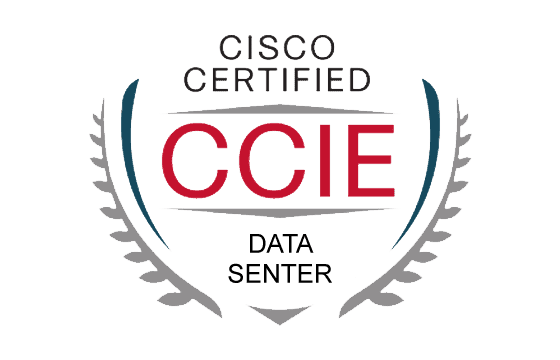
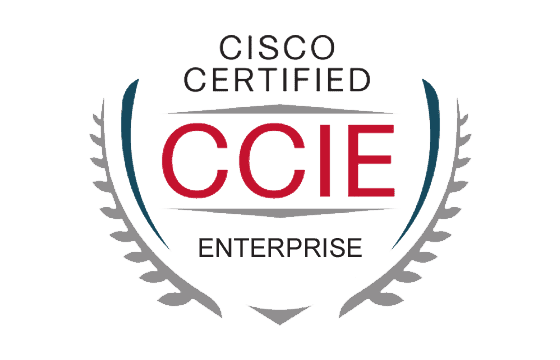
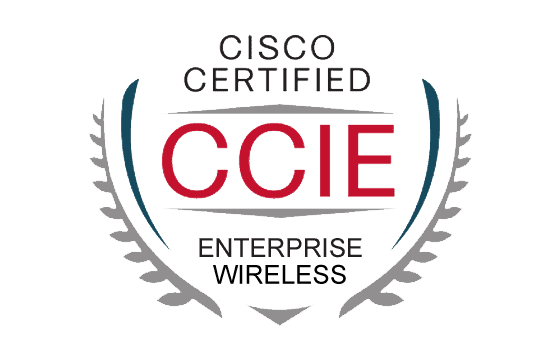
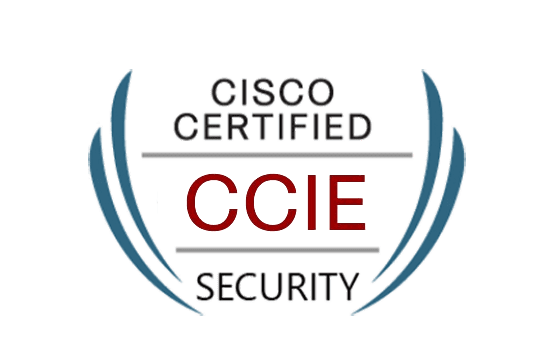
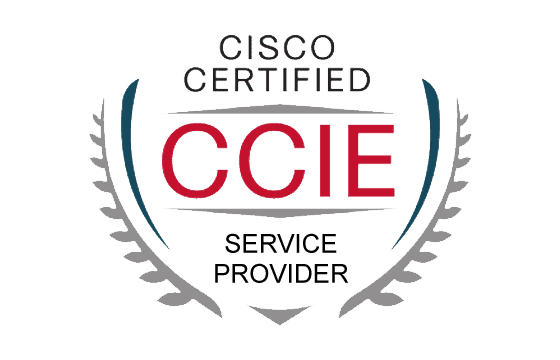
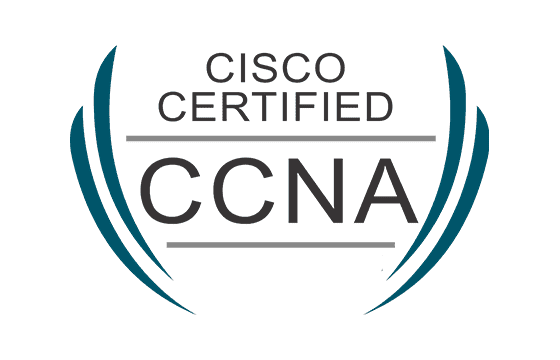
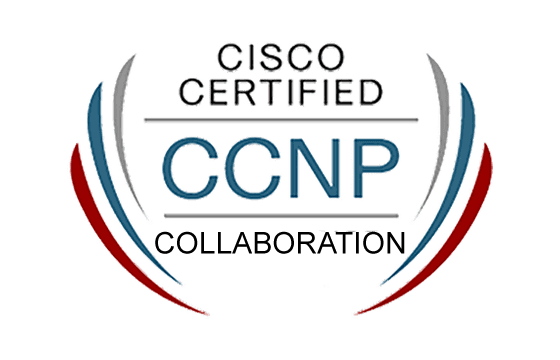
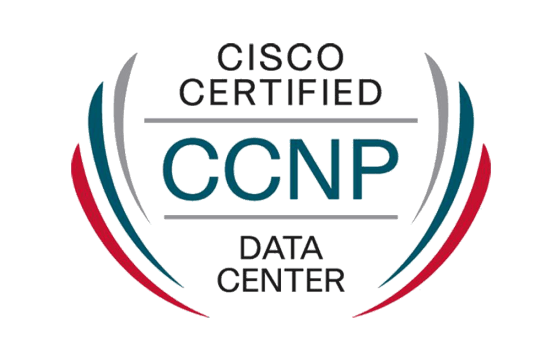
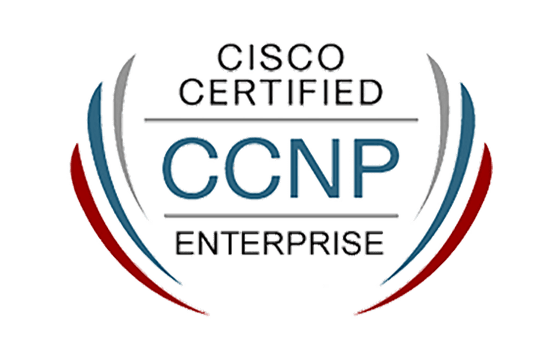
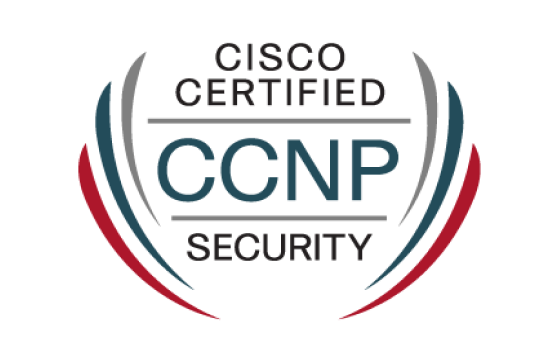
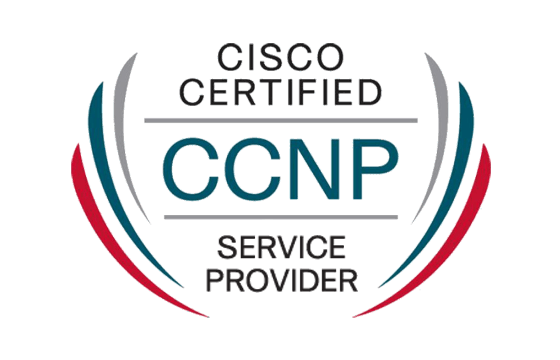
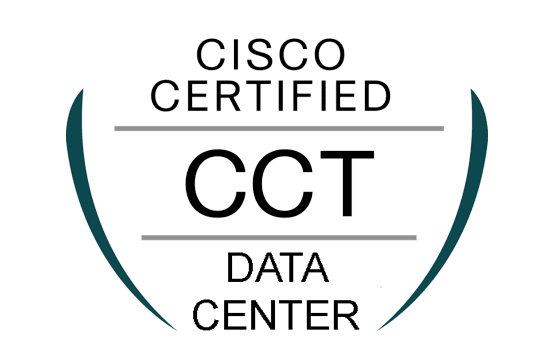
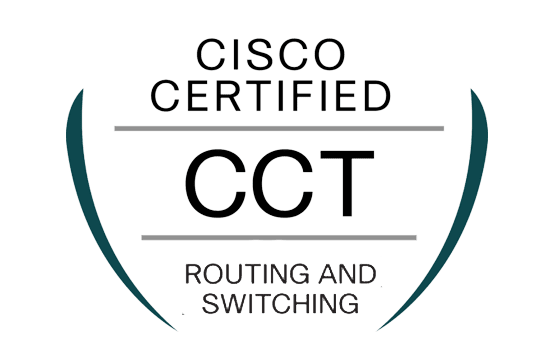

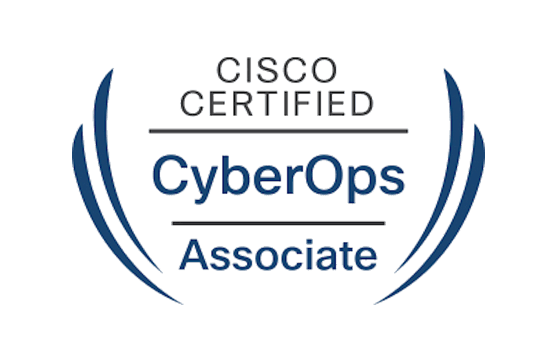





i need courses of certification cisco ccna
I was over the moon when I saw my results with 889 points. I decided to learn as many things as possible and study for several weeks to cover the whole topic. It was worth it, because I am a certified IT specialist from now on. Thank you, ExamCollection!
The 200-301 test is very easy when you know the answers to the questions and have learned the topics. And, the best thing is that this bundle can help you with the mastering of your skills.
The premium files in the bundle for the Cisco 200-301 exam are what I used on the ExamCollection website. The VCE emulator that you can get separately will help you to open these files. This is how I used them anyway. I was able to learn various details and evaluate my test-taking skills with the help of the emulator.